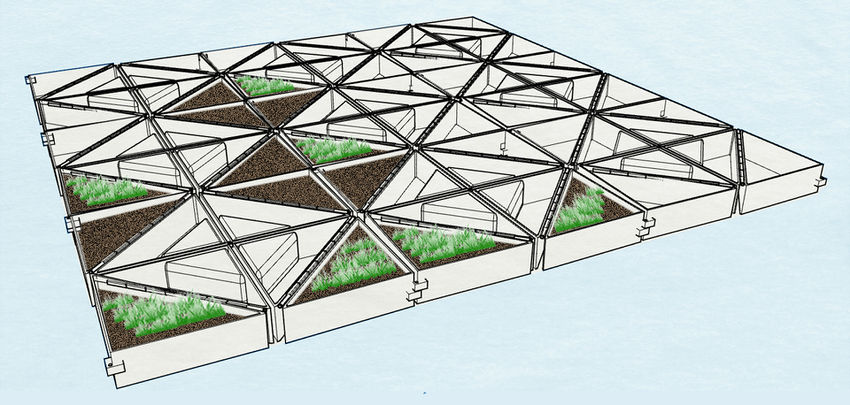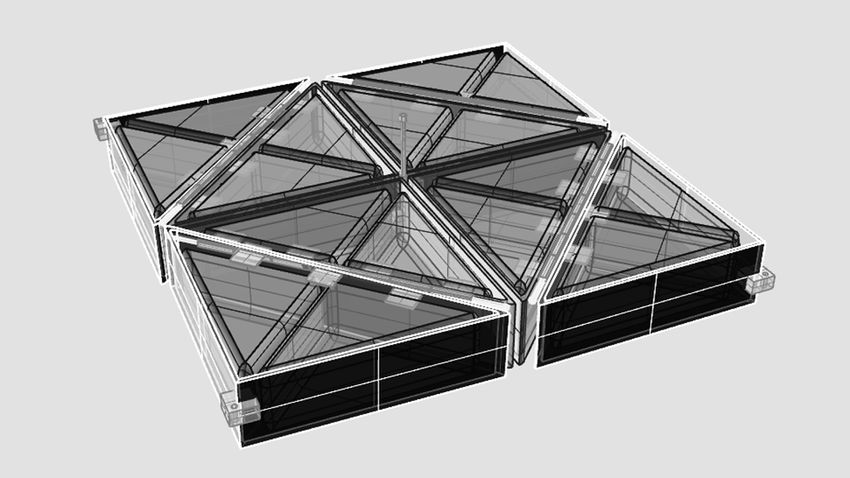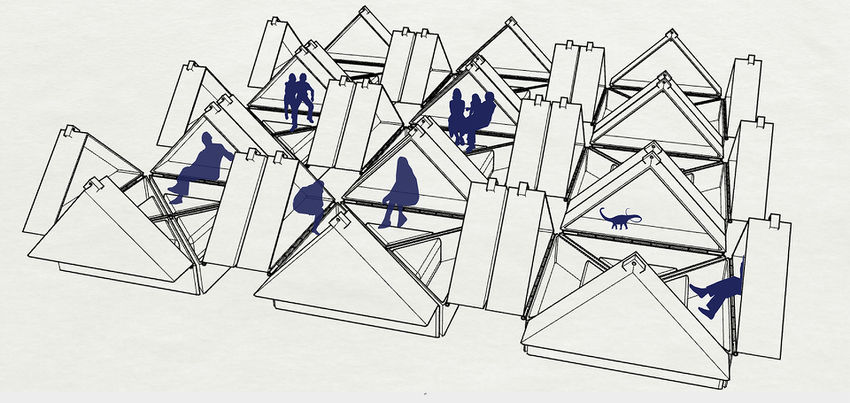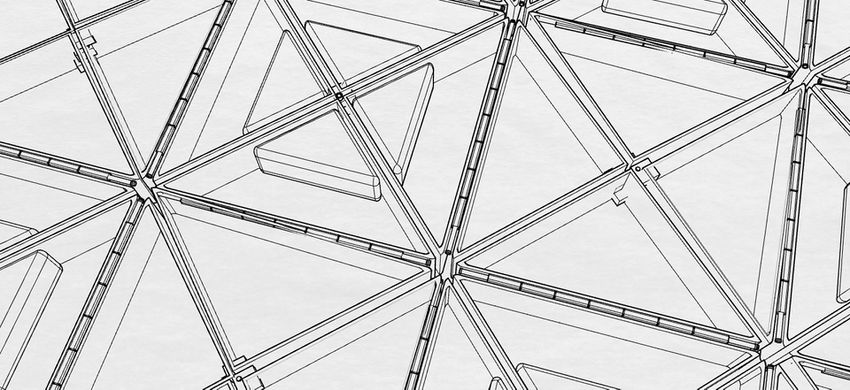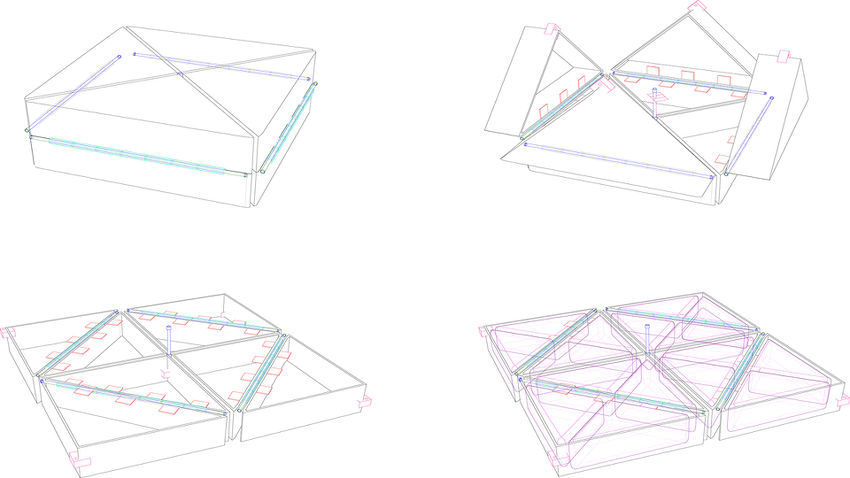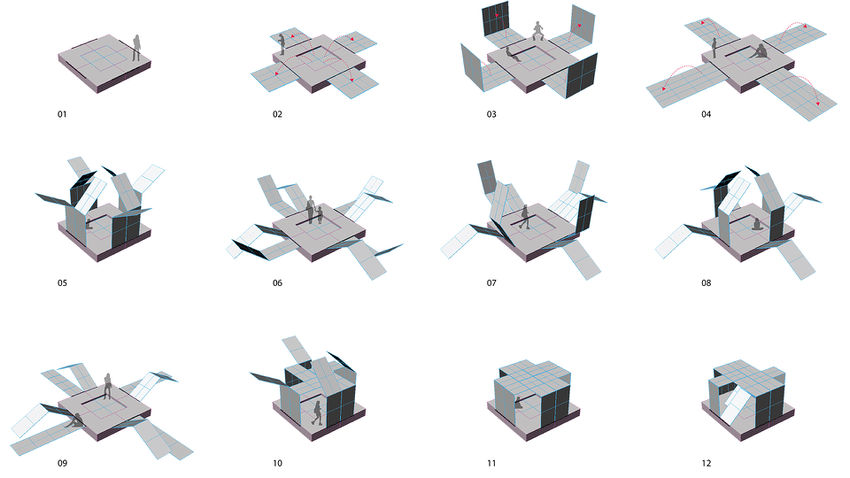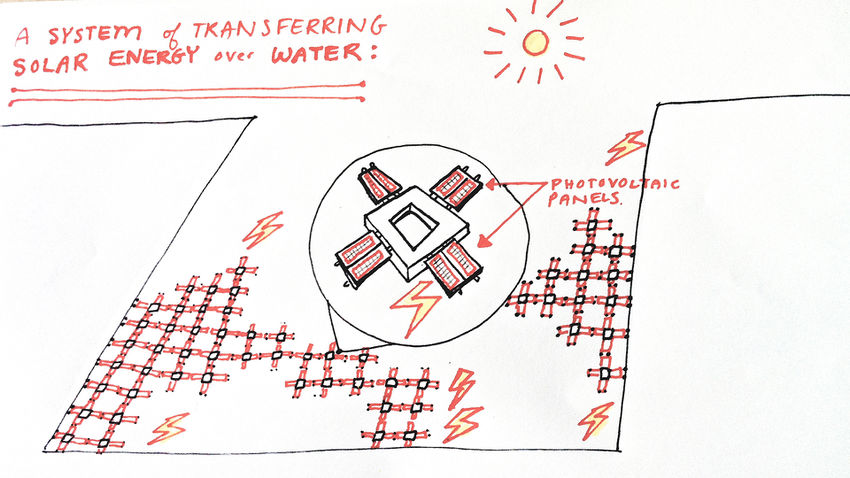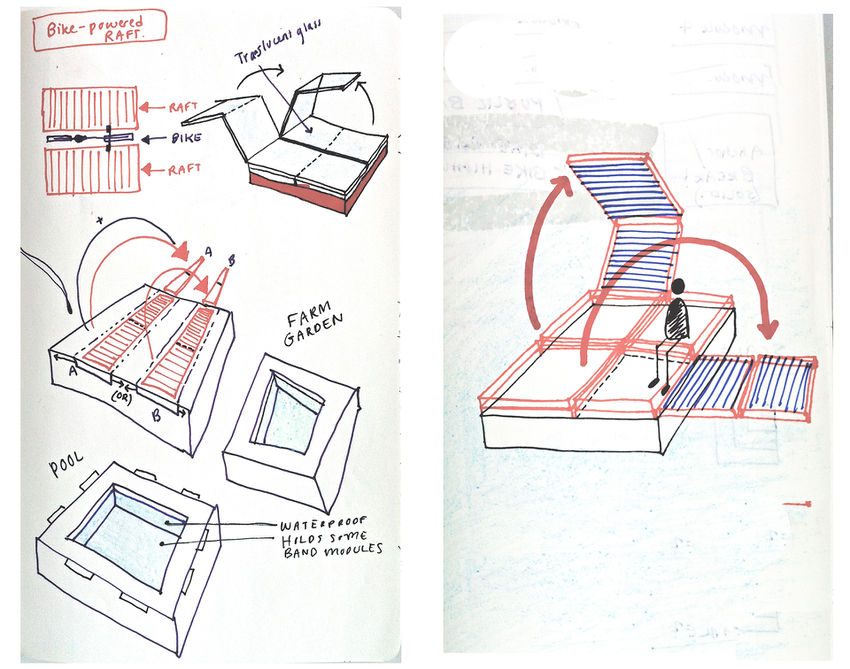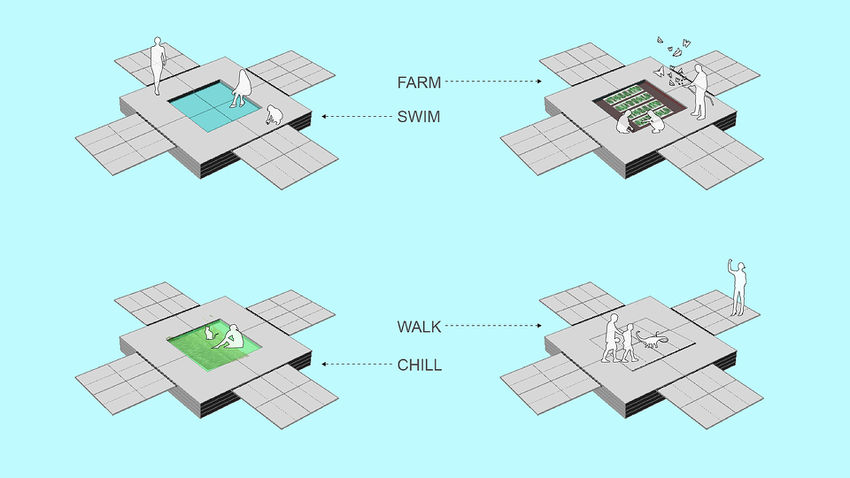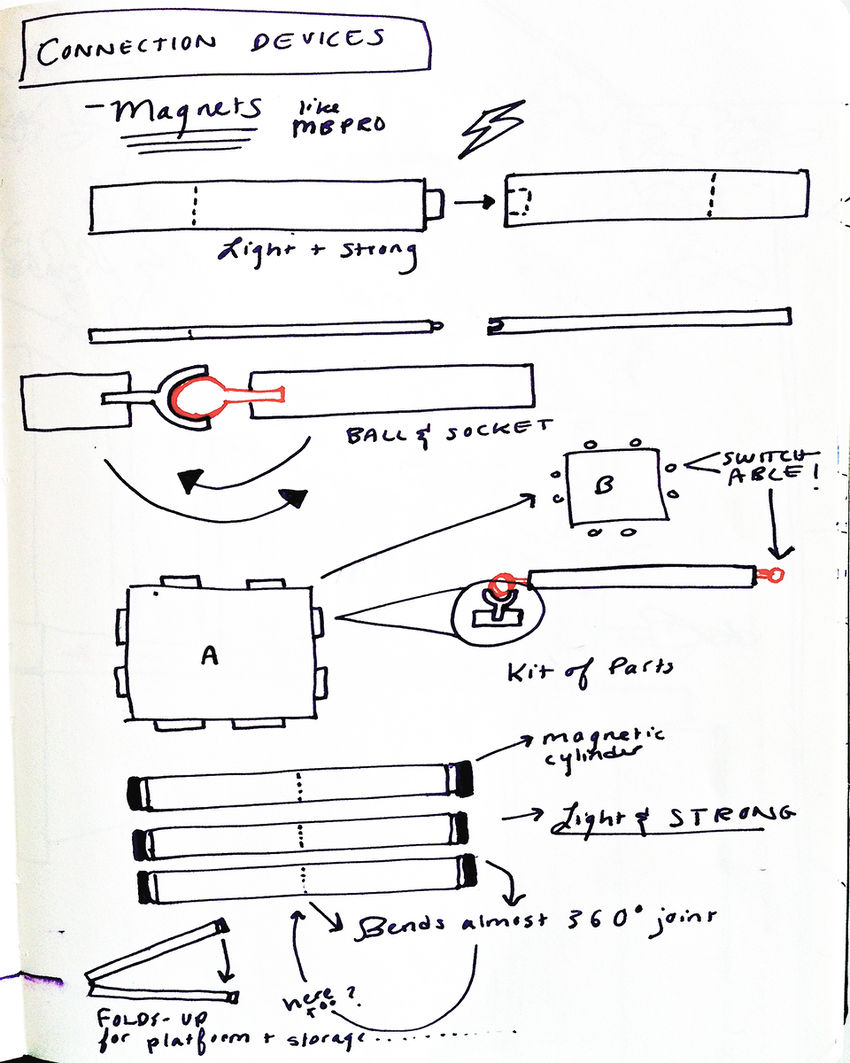project23:Performance
SELF-ASSEMBLY
1. Identify the steps of the assembly sequence.
2. Define programmable parts.
3. Derive energy for actuators from solar panels.
CONFIGURATIONS
ISLANDS float freely and have the capacity to regroup and cluster around certain projects according to need. Since the islands cover a maximum surface area on the water, solar harvesting can be optimized and farm plants receive generous sun exposure.
== ACTIVITIES ==
ISLANDS aims to cover the purposes of recreation, relaxation, sustenance, and transit by offering different module types to support each activity. For example, an RDM student may choose an ISLAND to find a dry, sheltered place to chill during lunch break. Simultaneously, a second modular form may support a floating solar farm, with maximized surface area and flexible angle toward the sun. Then another may act as a pontoon for boat repair. Meanwhile, a fourth module may transport people to all the other projects on-site and any points along the shoreline.
CONNECTIONS
The most crucial goal of the form for ISLANDS is connectivity. The aim is to connect outsiders (at sea) with insiders (on land) -- essentially, to bridge marine life with shore life. This includes sailors, students, workers, and local residents -- as reflected in the CONNECTIONS section. Therefore, the form should be modular and nest-able (or tessellated somehow). The various organizations possible for the modules (as a group) should react to any number of parameters such as water surface area / human density, project density, climate, daytime/nighttime, sunlight/shading, etc. In addition, the modules themselves could react to such parameters -- specifically, with the bend angle of the connective bands/gangways.
